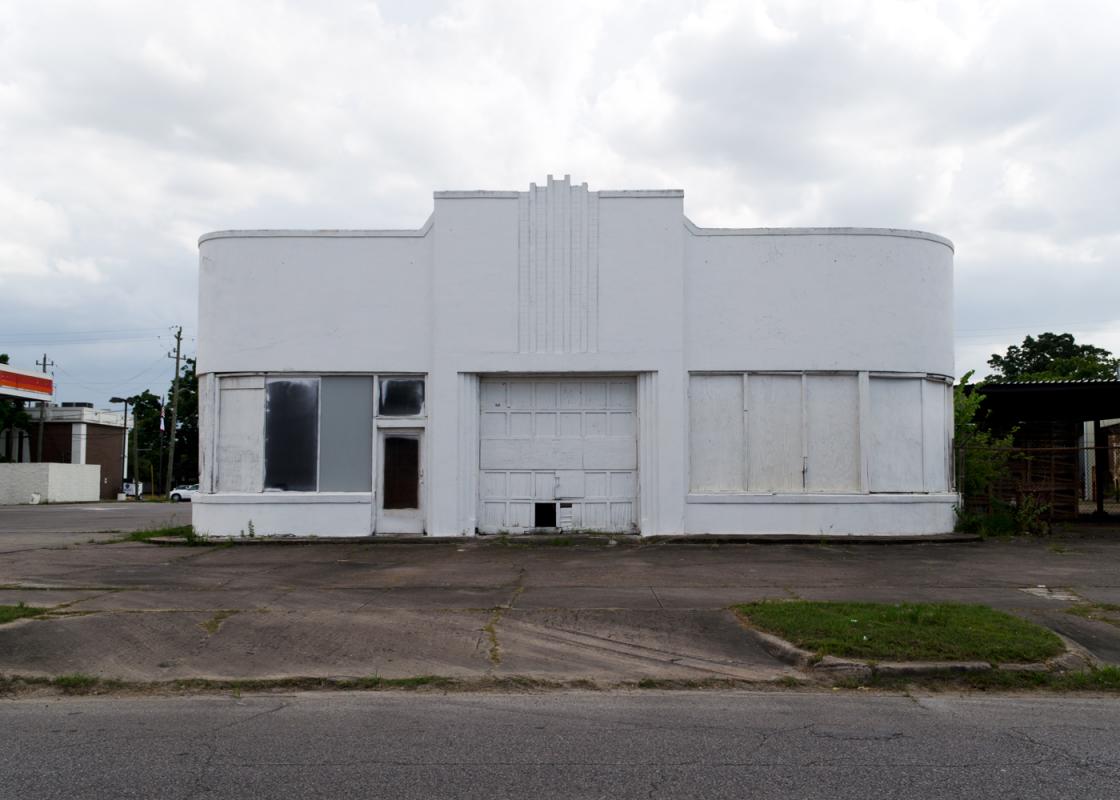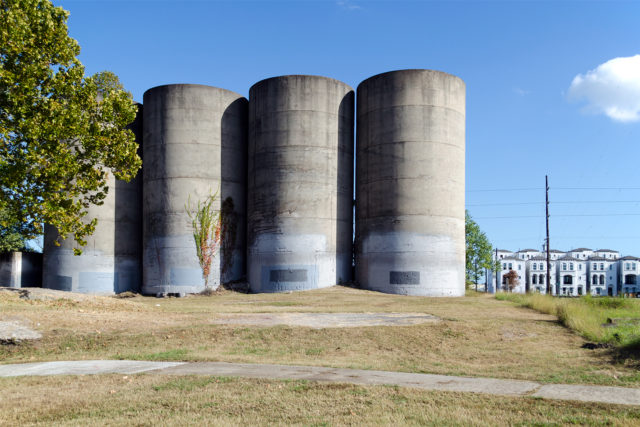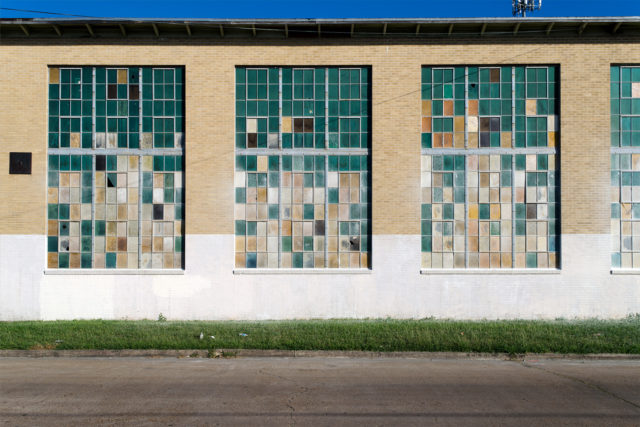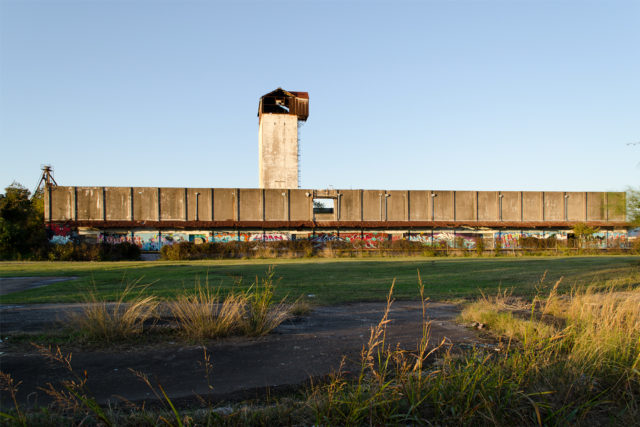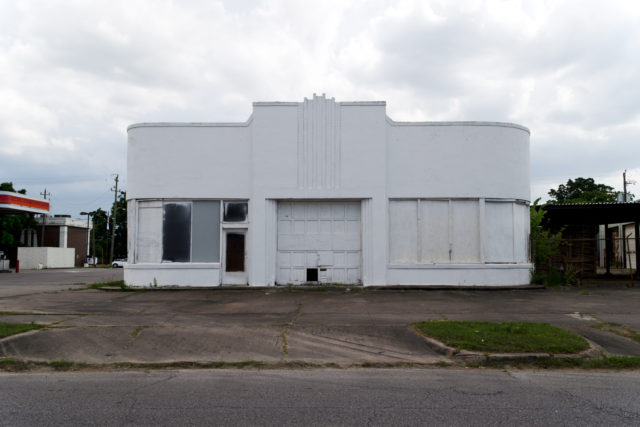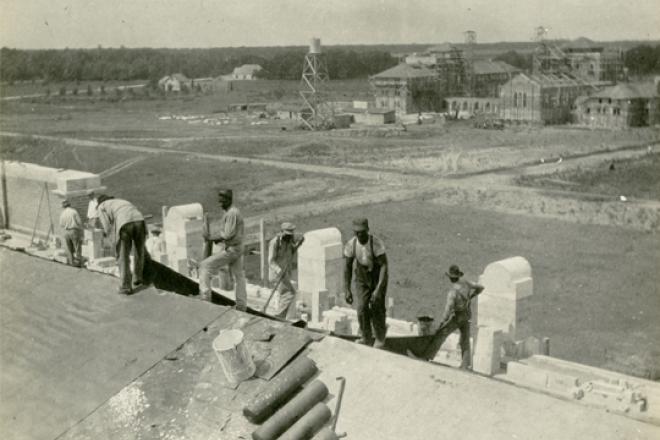Funded in part by a 2016 Rice Design Alliance Initiatives for Houston grant, Boggess will document buildings in Houston’s industrial East End in danger of demolition to prompt a dialogue of exploration and speculation about what will become of our built history throughout the coming year. You can share your thoughts and photos of buildings you care about saving with the hashtag #htownasfound, and follow her on Instagram @jaeboggess and at her blog.
Having grown up in Houston, I will not deny that I have a love/hate relationship with this city. It is likely perceived by most out-of-towners as a confusing amalgam of freeways and suburban sprawl that, despite a relatively strong economy over the past century, lacks a deeper historical and cultural significance in our nation's collective consciousness. Perhaps owing to its relative youth, having experienced most of its growth after World War II, Houston seems to lack a strong historical identity. Development patterns have relied more on market forces than on conventional urban planning. Automobile-oriented infrastructure has facilitated expansion outward from the urban center, leaving older disused buildings at the city's core in the dust: out with the old, in with the new.
Eight years living in the northeastern U.S. and Europe helped me appreciate how the built environment of an older city like New York, or even small-town New England, can offer a multi-layered picture of its history embedded within the contemporary urban fabric, asserting a unique sense of place appreciated by residents and visitors alike. Like many Houstonians, I am excited by the growth and densification that I have witnessed since moving back to my hometown, but I am apprehensive about how this will ultimately impact our built environment if efforts are not taken to rescue existing structures and protect communities from the homogenizing forces of new development.
A recent study comparing city blocks in three major cities by The Preservation Green Lab, a division of the National Trust for Historic Preservation (which held their annual conference here in Houston in early November), found that those blocks containing a mix of old and new buildings performed better than ones with new buildings alone across a broad array of metrics, including the number of independent, woman-, and minority-owned businesses, Walk Score, and density. These findings are discussed by National Trust President and CEO Stephanie Meeks and co-author Kevin C. Murphy in the new book, The Past and Future City: How Historic Preservation is Reviving America’s Communities, and the Atlas of ReUrbanism application on the Trust’s website.
According to the U.S. Census Bureau, the Houston metropolitan area led the nation in population growth last year, adding about 159,000 people. Accompanying this growth is a renewed interest in urban living, as indicated in surveys by Rice's Kinder Institute for Urban Research over the past several years. As a result, urban neighborhoods are undergoing rapid revitalization, which often means a proliferation of large-scale, developer-driven housing at the expense of existing city fabric. Nowhere is this trend more apparent than in the East End, which after several decades of decline has experienced a surge of development due to its proximity to the central business district. Already much of the land in the neighborhood known as “EaDo” contains repetitious new townhomes that overwhelm the older warehouses and few single-family dwellings that were there first.
For this reason, I chose a site in the East End for my graduate design thesis presented in January at the Rice School of Architecture, which proposed an alternative approach to adaptive reuse operating between strict historic preservation of the relic, which artificially halts the progression of time, and complete renovation, which often ignores the intent of the original building to achieve an entirely different sort of space. I felt inspired by recent fads of "ruin porn" (photography of dilapidated buildings) and "urbex" (urban exploration), which continue a centuries-old tradition of romanticizing an aesthetic of decay while bringing attention to disappearing structures of the more recent past. Even decades-old remnants of commonplace industrial construction, which abound in the East End, arguably become more interesting as time takes its toll. Perhaps Houston has its own version of "ruins" worth incorporating into the future cityscape.
To test this methodology, I presented a concept for the conversion of the old Comet Rice Mill, now known as "The Silo," into a hybrid urban farm and community center. My design took cues from its current dilapidated state to show how industrial ruins can evolve to accommodate different programs while providing a continuation in essence from the structure's earlier iterations. This approach could prove, as renowned architect Rem Koolhaas claimed, “how the ‘preserved’ could stay alive, and yet evolve ... [for] there are no ideas for preserving the mediocre, the generic" (“Cronocaos” Log 21, Winter 2011, p. 122).
Located in Houston's Fifth Ward, the mill was built in 1935 and comprised standard cast-in-place concrete and steel structures supporting long spans that housed machinery for storing and processing grain. After the industry moved to the Houston Ship Channel, the buildings were occupied by a lumber business that suffered a fire, so the damaged areas were partially demolished. The remaining semi-enclosed 35-foot concrete shell with its 100-foot silo tower and accompanying warehouses are now rented out for various private events and film and photography shoots while acting as a canvas for local graffiti artists. Neighboring land has been claimed by the Last Organic Outpost. Aside from ad-hoc surface-level transformations, no new architectural interventions have taken place.
Rather than proposing a complete overhaul into a new building, my project emphasized certain “as found” qualities like porosity, exposed structural elements and the invasion of nature, which lend the ruins a certain splendor. What was once considered a banal industrial structure was elevated by the ravages of time into an icon for the neighborhood and a scaffold for new activities. By virtue of its age, the building provides a unique spatial experience that cannot be imitated in something brand new. Going beyond passive admiration of the structure to increase its functionality while accentuating its existing condition became the design project for this site, which I believe could be applied elsewhere. This approach recalls Alison and Peter Smithson’s celebration of the "as found" as a generator for new activity: "... [W]e meant by the 'as found' not only adjacent buildings but all those marks that constitute remembrances in a place and that are to be read by finding out how the existing built fabric of the place came to be as it was ... the as found was a new seeing of the ordinary, an openness as to how prosaic 'things' could re-energise our inventive activity ... how the new could re-energise the existing fabric.”
After spending a good amount of time in the East End researching the site, it became clear to me that the area has a unique history rooted in the city's evolving industries and the communities that support them. The expansion of the Houston Ship Channel in various stages in the early twentieth century established the city as a transportation hub, with a multitude of railroads crisscrossing the east side to connect the port with the country's major freight arteries. Industry and the accompanying workforce, composed largely of immigrants, soon moved closer to the water, leaving behind urban voids and abandonment where they previously existed.
Petrochemical refineries became the dominant presence on the far east side after the discovery of oilfields nearby. East End neighborhoods are historically diverse, predominantly populated by German, Italian, and Mexican immigrants who settled near the port. A large Latino community remains to this day, with the Second Ward and Magnolia Park being two of Houston's oldest Hispanic neighborhoods.
We are experiencing a growing awareness for historic preservation, as Barry Moore notes, but currently only one of the city's protected historic districts — Glenbrook Valley — exists east of Downtown. Additionally, current city guides tend to bias the more affluent west side (The New York Times' “36 Hours in Houston” published in February does not feature any locations east of Downtown). As excitement grows about the potential for urban development here, efforts threaten to uproot residents and diminish the East End’s legacy as a culturally diverse production hub. Eastward expansion of the light rail will be either a blessing or a curse, depending on how accompanying development treats the existing urban fabric. Preservation efforts in Houston must look beyond obvious landmarks beloved for their cultural iconicity, such as the Astrodome, to include the vestiges of East End industry as it contributes to the story of our city.


